Estimated reading time: 9 minutes
Spring is not usually thought of as the time for pruning fruit trees. But in our orchard, we often find ourselves doing a bit of pruning in late spring.
Turns out, there are a few cases where it might be the best action.
When it comes to pruning, we never focus on what the “right” thing to do is. It’s more useful to draw on basic fruit tree pruning principles to decide when and if to prune, no matter the time of year.
Fruit tree pruning principles
Generally, you can prune most fruit trees (apples, pears, peaches, nectarines, and plums) in winter while the trees are dormant.
But that doesn’t always happen. If you haven’t finished your pruning in winter, you may be wondering whether it’s too late to prune your trees.
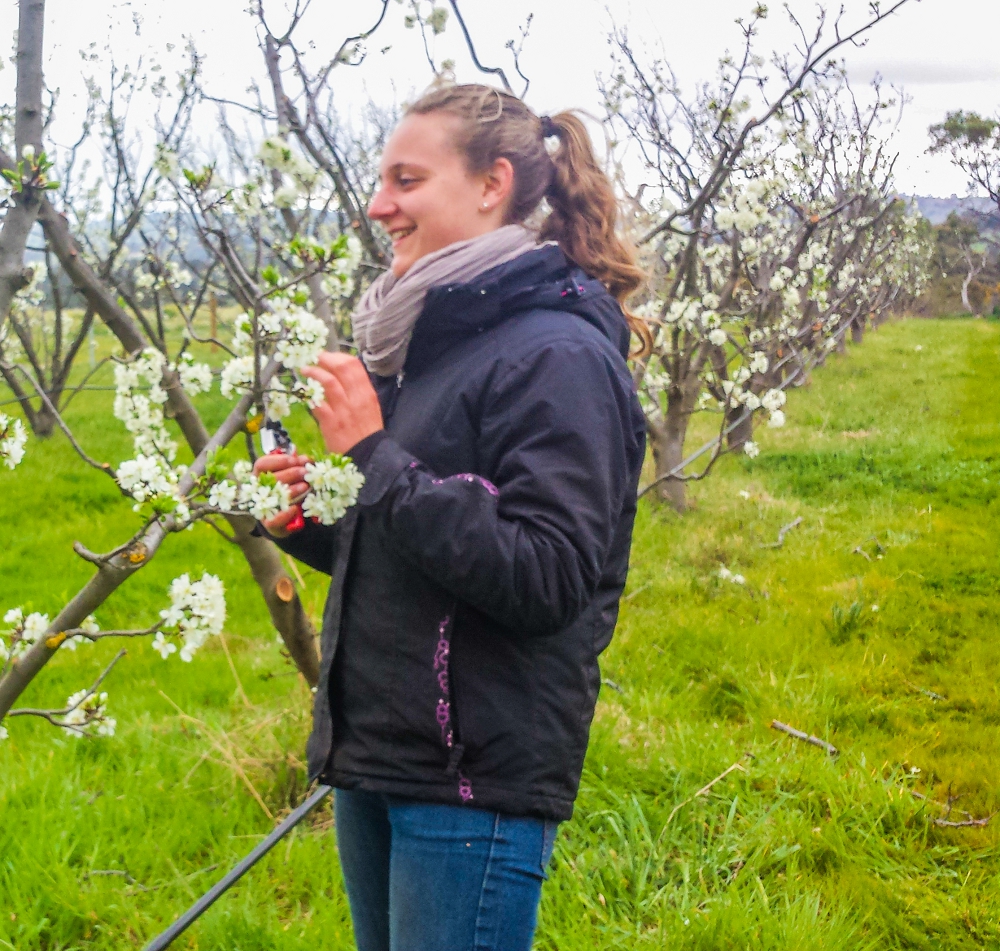
So, what are the likely results of pruning in late winter/early spring, and is it a good idea?
The answer will depend on whether you’re trying to encourage growth or slow it down. In most cases, you’ll probably be trying to encourage growth.
Here are the principles to keep in mind:
- Pruning in winter encourages a strong growth response in the trees.
- This effect gradually wanes as the season progresses. The later you prune, the less the tree is likely to grow in response.
- If your trees have already broken dormancy when you prune them, you’ll be wasting some of the energy they will have already put into growth.
- Pruning when the trees are already flowering is likely to lead to a smaller crop, but that may be better than leaving them completely un-pruned.
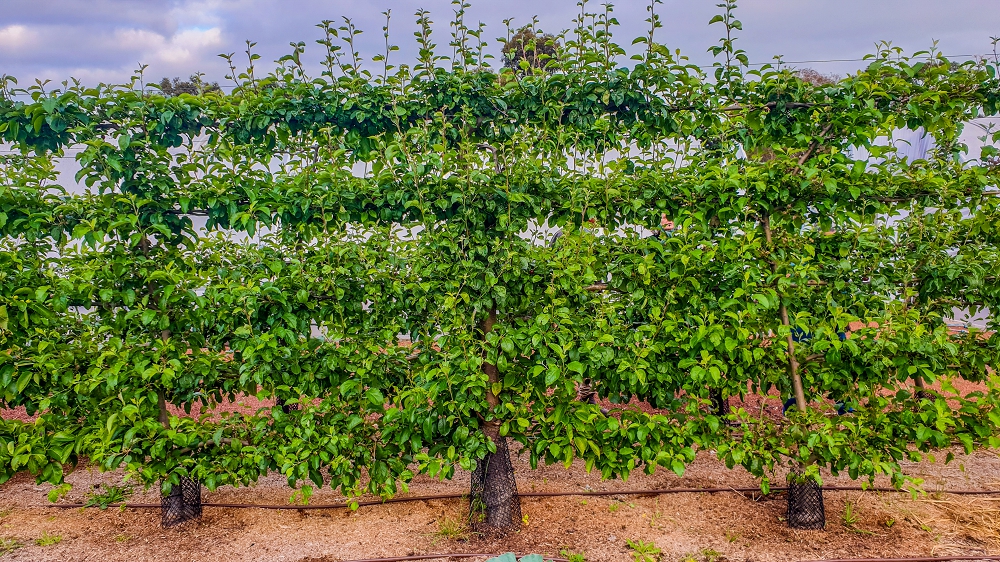
Dealing with watershoots
We’re often asked what to do with watershoots. These are strong, upright laterals that grow in spring. You can see them clearly at the top of the apple espalier in the photo above.
As usual, there’s no “right” or “wrong” answer.
Watershoots can be very useful. For example, if they grow low down in a vase shaped tree they may be able to be kept as new limbs.
Watershoots commonly grow on horizontal branches, for example in espaliered trees. They are usually either removed or shortened to help convert them into spurs. This is best achieved with late summer pruning, after harvest and when the trees have stopped growing for the season.
Summer pruning is also useful if you’re renovating a huge old fruit tree and you’d love to be able to reduce it’s size without it growing back just as big.
Pruning in spring or early summer
Pruning in spring or early summer is more likely to encourage the tree to grow than pruning in late summer. Though not as much as if you’d pruned it in winter when it was still dormant. (Remember, it’s a waning effect.)
There are a few examples where this might be a good idea. The first one is if your tree has been affected by disease.
Spring pruning in apricot trees
Stone fruit trees in particular are very prone to fungal disease, particularly in wet years. This can have several unfortunate results.
The first is crop loss. It’s quite common to lose apricots, for example, to a disease called blossom blight.
But it can also lead to disease in the wood, and sometimes even to dieback. Pruning can be used to remove the dead wood from the tree and help it to recover.
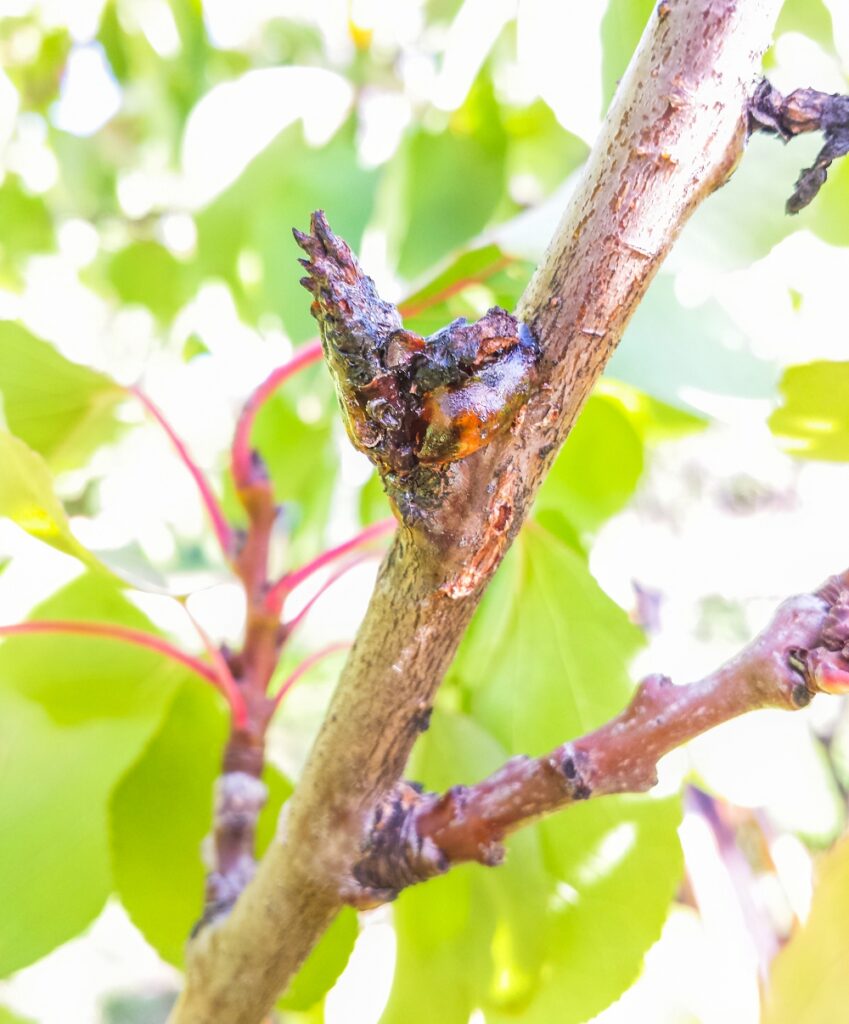
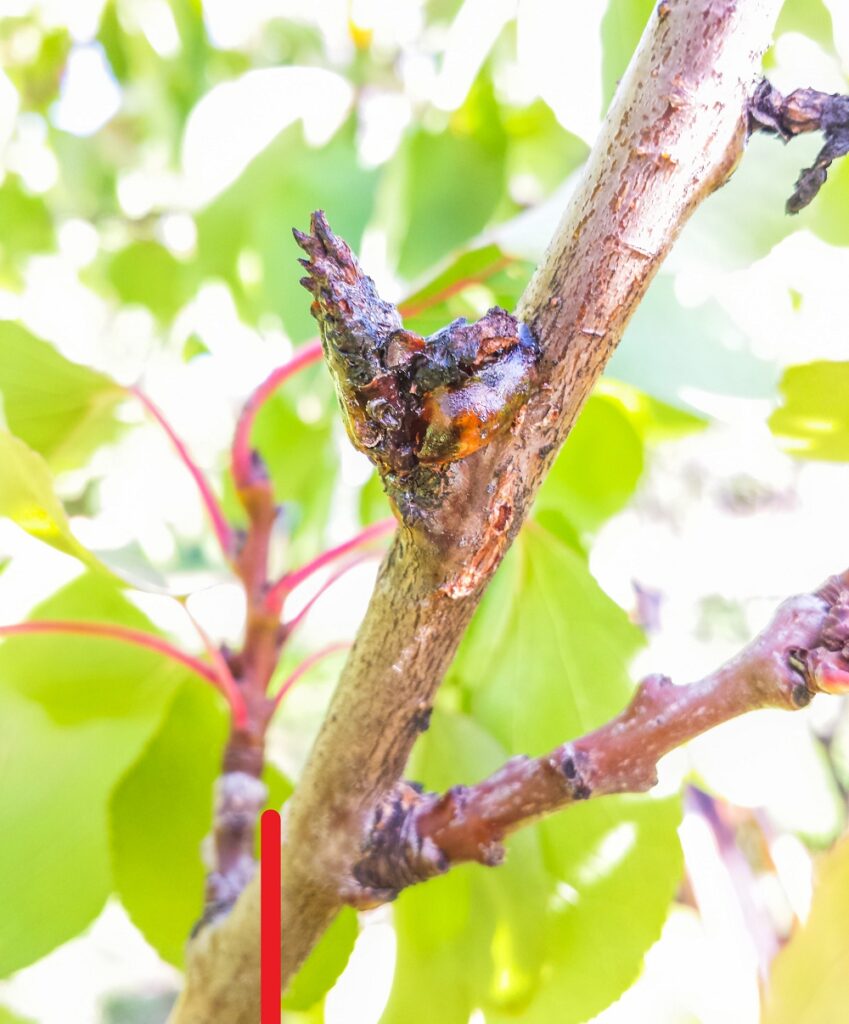
The photo on the left (above) shows an apricot tree which has had blossom blight. You can clearly see where the flowers have rotted. The tree has responded by isolating the disease with a blob of gum. Below this point, the tree has recovered well and grown new shoots.
Remedial pruning in this case would be to cut on the red line in the right hand photo, back to a healthy shoot. This removes the diseased wood and encourage new, healthy growth.
The earlier in the season that this type of remedial pruning is done, the more it will stimulate the tree to grow new wood to replace the diseased wood that has been removed.
Spring pruning in peach trees
Peach trees are more prone to leaf curl. In bad cases this can also lead to dieback in the shoots as you can see in the photo (below) on the left. This results in bare patches on the branches and laterals. The new growth is mainly at the ends of the branches.


Left untouched, this can result in leggy trees with many bare patches of wood that won’t grow any fruit. Laterals become long and weak. They are likely to produce less fruit in the future, and any fruit they do grow is likely to be small and poor quality.
Remedial pruning in this case is about looking for opportunities to remove the diseased wood and encourage new growth close to the main branch. The photo on the right (above) shows how to do this.
In each case, the laterals have long bare patches with few leaves (in the orange ovals). Some regrowth may occur – but unfortunately it’s likely to happen at the ends of the laterals.
However, if you look closely you’ll notice a small bunch of leaves close to the main branch. Making a cut at the the red line will remove the long bare patch and force any new growth to occur close to the main branch.
What if remedial pruning also removes fruit?
You’ll notice that the diseased laterals also have some fruit, which will be removed by making these remedial cuts.
That’s sad, but OK for two reasons. The fruit is likely to fall off anyway because there are not enough leaves to support them to grow to maturity. It’s also more important to protect the structure of your tree than save a few small peaches.
If you can help the tree to regrow a strong, healthy structure you’ll be repaid in peaches many times over in the future.
Heading cuts and thinning cuts
While we’re talking about pruning principles. There are a couple of things we need to mention. The first is the difference between a heading cut and a thinning cut.
At the end of every branch or lateral (smaller side-branch) is an ‘apical’ or ‘terminal’ bud. It releases a hormone (called auxin) that suppresses the growth of the buds below it.
Any time you make a cut that removes the apical bud it’s called a ‘heading’ cut. The effect of a heading cut is to create branching.
This is a very stimulating type of cut. Usually, the 2 or 3 buds immediately below the cut will start to grow.

On the other hand, if you make a pruning cut back to a lateral, but leave the lateral intact – i.e. leave its apical bud in place, that’s called a ‘thinning’ cut.
This is a less stimulating type of cut. It’s a good way to remove some wood from the tree without creating branching.
Should you remove all growth going into the middle of the tree?
This is one of the pruning myths that we love to disagree with.
There’s no doubt that sometimes it’s the right thing to do. For example, large branches that are growing into the middle of the tree can create shading over the lower branches. For this reason, they should usually be removed. This is especially true of branches higher up in the tree, less so for branches growing lower in the tree.
However, it’s not a ‘rule’. Small branches (or laterals) that are going into the middle of the tree often do not need removing. In fact, they can be very useful fruit-bearing wood. Removing them can create bare patches, which are basically just wasted real estate.
Removing all the laterals that grow into the middle of the tree is one of those “rules” that can end up doing quite a bit of damage to your tree.
We definitely don’t like pruning rules, it’s all about cuts and consequences, people!
Related Articles
The top 4 fruit tree espalier mistakes to avoid
Espalier can be beautiful and productive way to grow your fruit trees—if you avoid these 4 common mistakes.
How to tell fruit buds from leaf buds
Understanding the difference between fruit buds and leaf buds on your fruit tree makes everything else about fruit growing easier.
How to prune your apple tree
Pruning apple trees takes a little more specialist knowledge than other fruit types, but your trees will reward you with ample crops.

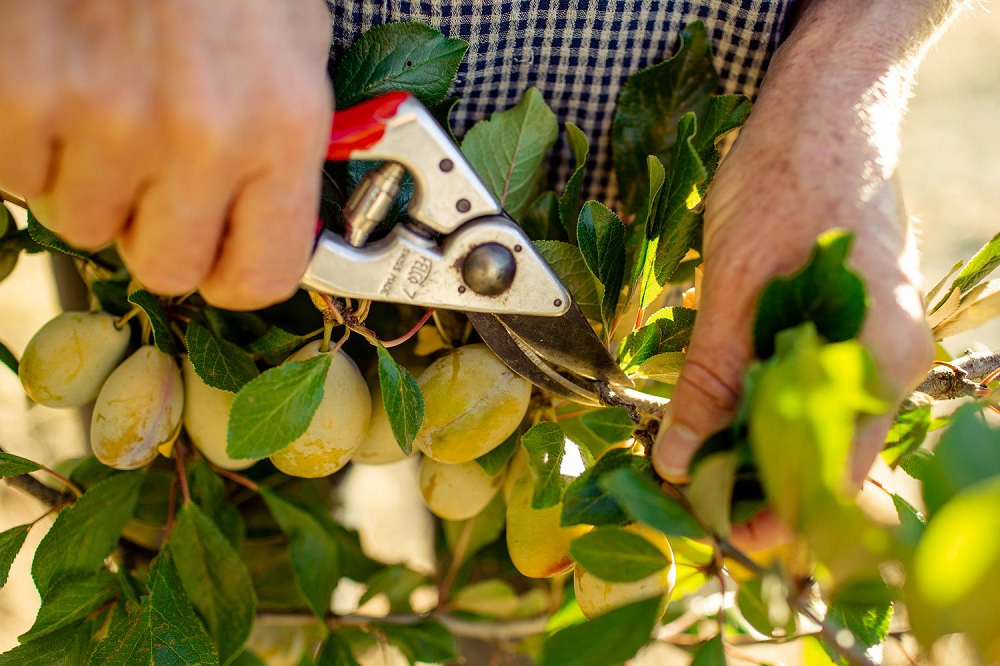
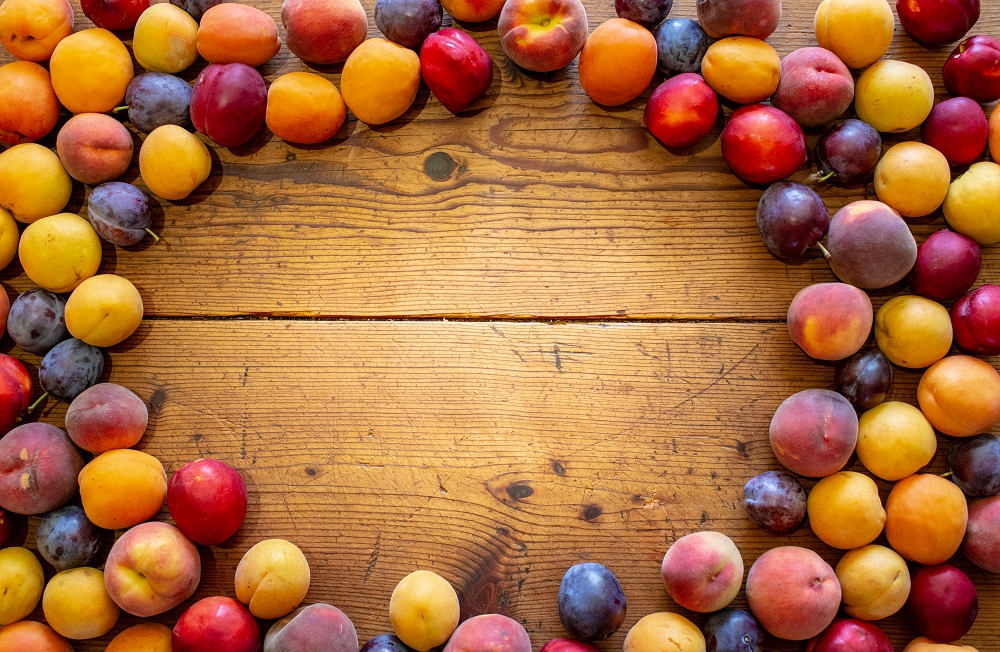

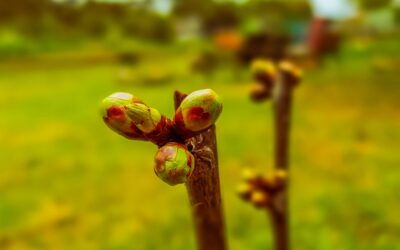
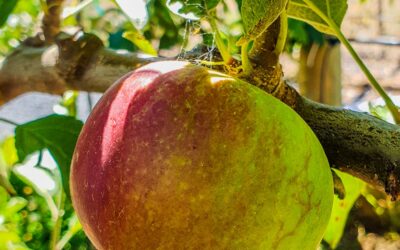
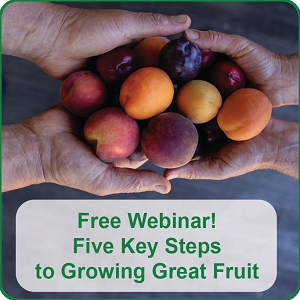

Great tips Thanks
very nice info, could we get some of your expertise in central leaders vs open vase pruning
Hi Jacqueline,
We tend to use a vase for a couple of reasons – the open vase shape seems to work really well for a big spectrum of different fruit varieties, so, useful if you have a big orchard; fruit yields tend to be better and; we find it easier to control the height of the trees. So, if you’re in establishment phase with your trees, we do find our members have lots of success pruning to a vase shape in the first couple of years.
Some apples are well suited to a central leader form though and can be quite productive. In particular, those that are on a dwarfing rootstock as you’ll have less of a battle in keeping the height under control. And, if you haven’t done a vase-focused establishment prune, and your trees are in the maintenance phase, often people will end up with a sort of modified central leader form – which is not too bad, and still has many of the benefits of a vase without needing to renovate the tree, particularly if you’ve got a dwarfing root stock. So, if people miss pruning to a vase in those first couple of years, it doesn’t have to be the end of the world :). Anyone else reading along have thoughts on these two different pruning forms?
Thanks, Meg – Grow Great Fruit team.
I’m trying to grow all fruit trees on the fences but I’m not sure on pruning methods for the different types. I would love to pay someone to come and help me.
Hi Karyn – we have a couple of resources & short courses (like this one) that might get you started, and our premium GGF program involves personalised support with things just like this. It can definitely be useful to get someone to help with some of the more technical aspects of pruning, particularly training on a fence (sometimes called ‘espalier’) – but we’d recommend trying to find a way to build your own confidence to do it yourself too! Good luck, Meg – GGF team.
Can you expand on apical buds? Do they look different than other buds or is it only about their location? Also, how do you tell the difference between buds that will turn into limbs vs fruit?
Thanks
Hi Dave,
That’s a great question about apical buds – yes their location is a giveaway, and they won’t usually look like a fruit bud. You might find this blog post on how to tell the difference between leaf and fruit buds has the answer! Hope that helps, Meg – GGF team.
I pruned my trees in the fall, and now the shoots are growing back up in the spring. I’m thinking of cutting them again, although it’s almost summer, then hiccup again from autumn?
I think this would depend on your purpose for pruning? Are you encouraging fruit/do you have fruit on the trees? If so, unless there is some spot pruning needed, best to wait until the tree has finished fruiting! Meg – GGF team.